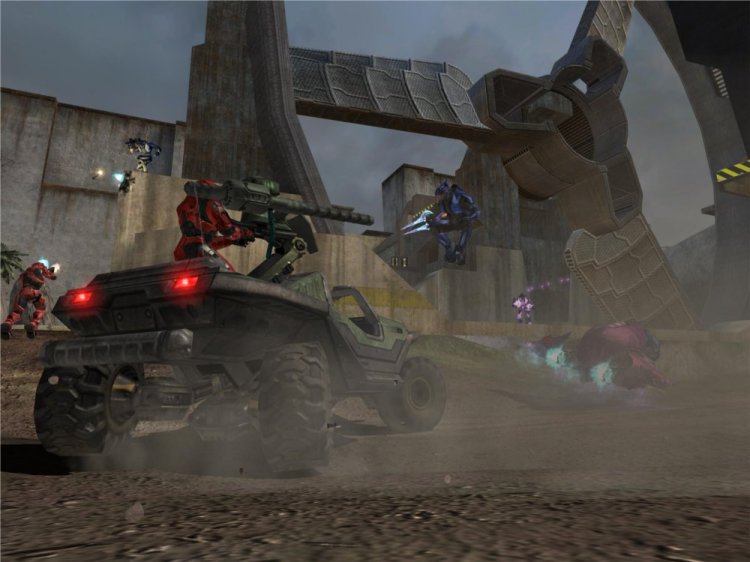World of Warcraft (PC, Mac)
Out of all of the games on this list, World of Warcraft is easily still the most relevant. Almost 10 years after its release in 2004, millions of subscribers still play in Blizzard’s massively online world. That’s largely because World of Warcraft has always rolled out new patches and expansions, but it’s also because the original framework is so strong. Even in 2004, Warcraft gave players a huge world filled with endless adventure to enjoy. I know I still fondly remember all those times I would wander around Stormwind City just to explore the architecture or the first time I got to ride around the open plains of Azeroth on a mount.
Where are they now? World of Warcraft’s fifth expansion, Warlords of Dreanor, comes out this fall. It’ll give players a chance to explore the series’ past, but it’ll also update the aging character models for many of the races.
– Mike Minotti, staff writer and community manager
Star Wars: Knights of the Old Republic II — The Sith Lords (Xbox, PC)
I’m one of those people. You know, those who prefer the buggier sequel from Obisidian Entertainment to BioWare’s acclaimed original. It’s a better story, exploring Star Wars in a manner no game had done before. Reconnecting your character, The Exile, to the Force reminded me of another masterwork RPG, Black Isle’s Planescape: Torment. And that’s no surprise, since Obsidian came from the wreckage of Black Isle, and Knights of the Old Republic II and Torment share the same designer, Chris Avellone. But LucasArts forced the studio to rush production, resulting in many bugs (a fan patch had 500 fixes following a series of efforts from Obsidian) and an incomplete ending (which fans restored as well). But I preferred this story to the amnesia plot of the first.
And HK-47, the life-hating murder droid, is even better here than in the original.
Where are they now? Obsidian remains one of the most noted RPG development houses in gaming. It produced another masterwork several years later with Neverwinter Nights 2: Mask of the Betrayer. It turned out Fallout: New Vegas. And Avellone continues to carry the rep as one of the best RPG writers around, contributing to his studio’s upcoming Kickstater games Pillars of Eternity (coming out this winter) and Torment: Tides of Numenera.
– Jason Wilson, managing editor
Fable (Xbox)
Before the franchise became the subject of RPG-nut derision, Lionhead Studio’s Fable had players rise to heroism in the delightfully British world of Albion. Players debunked lead designer Peter Molyneux’s claims of real-time fauna growth almost immediately, but that could only hamper the experience so much. With a binary moral choice system front and center, the favor (and often lives) of Albion’s citizens were in your hands. A simple but engaging combat system kept progression light, and the optional quests of the finicky Demon Doors often yielded more entertaining results than the main story. Plus, you could kick chickens.
Where are they now? Microsoft Game Studios turned the success of the first game into it’s most prominent, long-running RPG franchise. After two direct sequels and two spin-offs (an Xbox Live beat-em-up and an on-rails Kinect shooter,) a 10th-anniversary remake of the original adventure came out on Xbox 360 and PC earlier this year.
Paper Mario: The Thousand-Year Door (GameCube)
When you ask people to name their favorite RPGs, you’ll probably hear a lot about Final Fantasy, Dragon Quest, and Chrono Trigger. However, one of my favorites is this clever, quirky, and hilarious adventure. A sequel to Paper Mario on the Nintendo 64, The Thousand-Year Door improved on its predecessor in just about every way. The gameplay, especially the turn-based battles, are definitely familiar, but the presentation is incredibly imaginative. Fights take place on a stage, complete with curtains and an audience, which will reward you if you pull of flashy moves. However, the sharp writing really made The Thousand-Year Door stand out, especially a series of hilarious conversations with Luigi and his hapless partners, who tell you about their own, less-glamorous adventures.
Where are they now? The Paper Mario series is still around, but it peaked with this one. Super Paper Mario on the Wii was more of a platformer than an RPG, and Sticker Star on the 3DS got rid of too many of the series’ best conventions, like partners and a whimsical story.
– Mike Minotti, staff writer and community manager
Star Ocean: Til the End of Time (PlayStation 2)
Remember when Japanese RPGs were more than a niche genre in the West? 2004 featured the release of hits such as Tales of Symphonia and this third entry to the Star Ocean series. While the it had rough moments, particularly the slow beginning and laborious Item Creation mode, it excelled with its combat system that borrowed a lot of concepts from fighting games. Players are free to move at all times, but they had to utilize their stamina wisely to score big combos and avoid damage. Each of the 10 characters had distinct combat styles, and you had a lot of control over their special attacks and computer A.I. tactics. And with its extensive post-game campaign, Star Ocean wound up as something hard to wean yourself off of.
Where are they now?: Since this game’s plot twist kinda messed up the Star Ocean timeline, 2009’s The Last Hope was a prequel that adhered more to series conventions. After that, developer tri-Ace produced the unique shooter/RPG hybrid Resonance of Fate and chipped in on the sequels to Final Fantasy XIII, and it has just announced the free-to-play PlayStation Vita shooter Judas Code as its latest project.
Next: The hardest, creepiest, and weirdest from Japan






